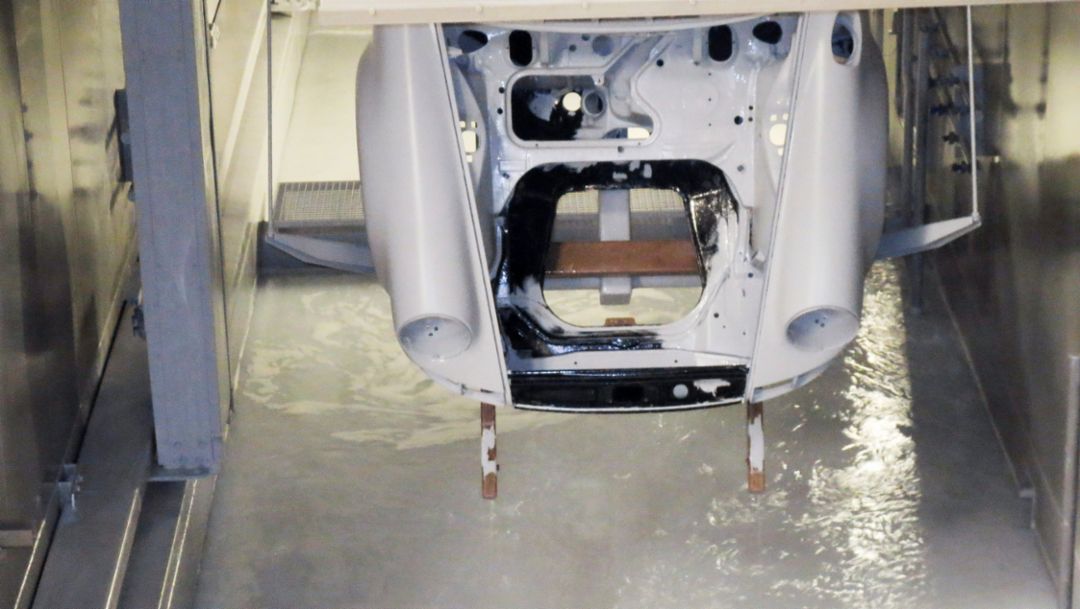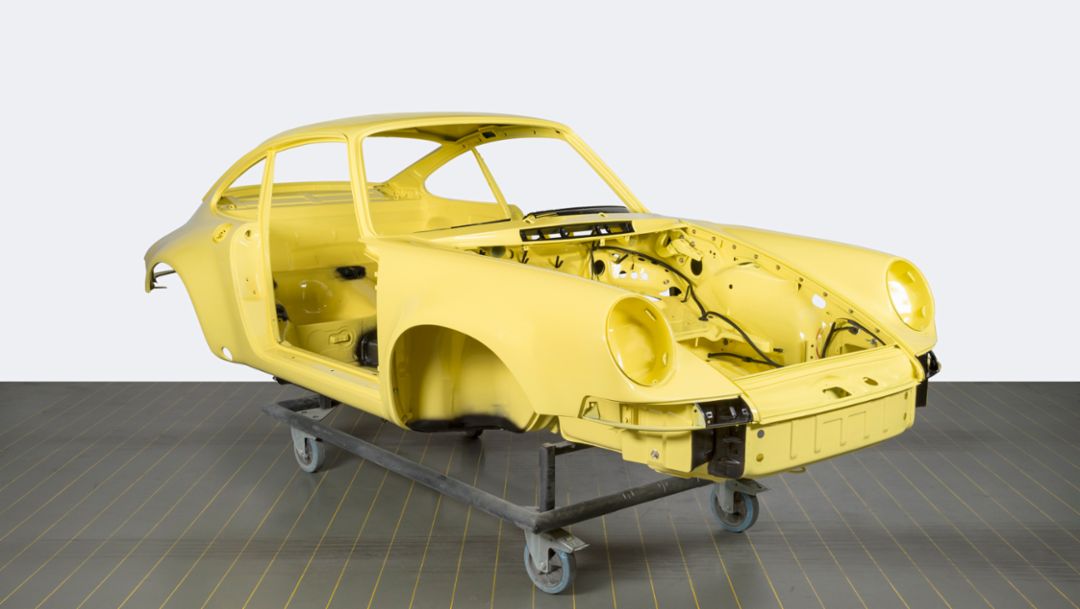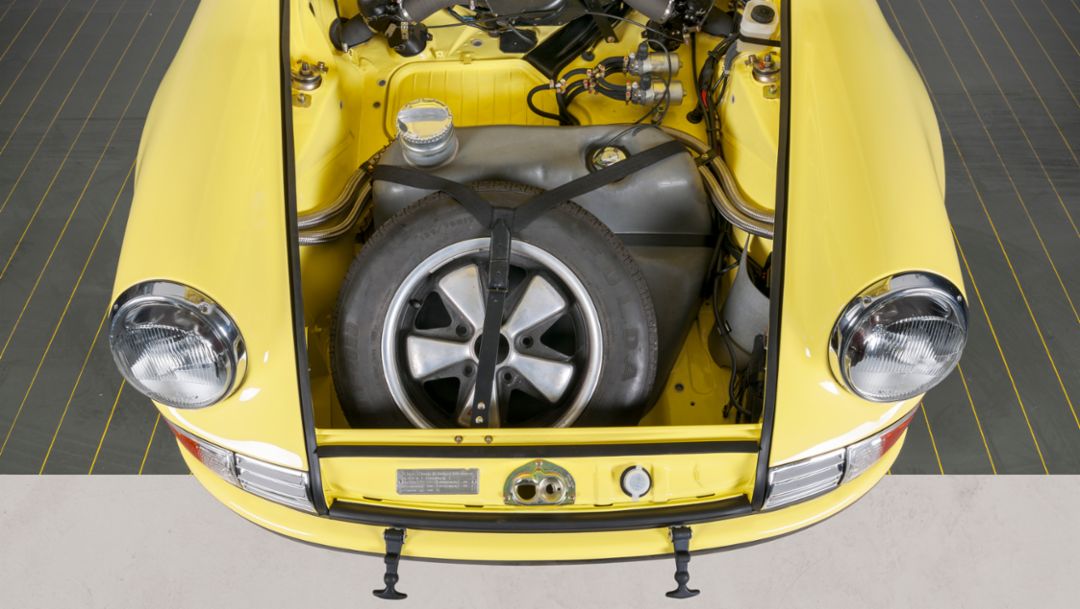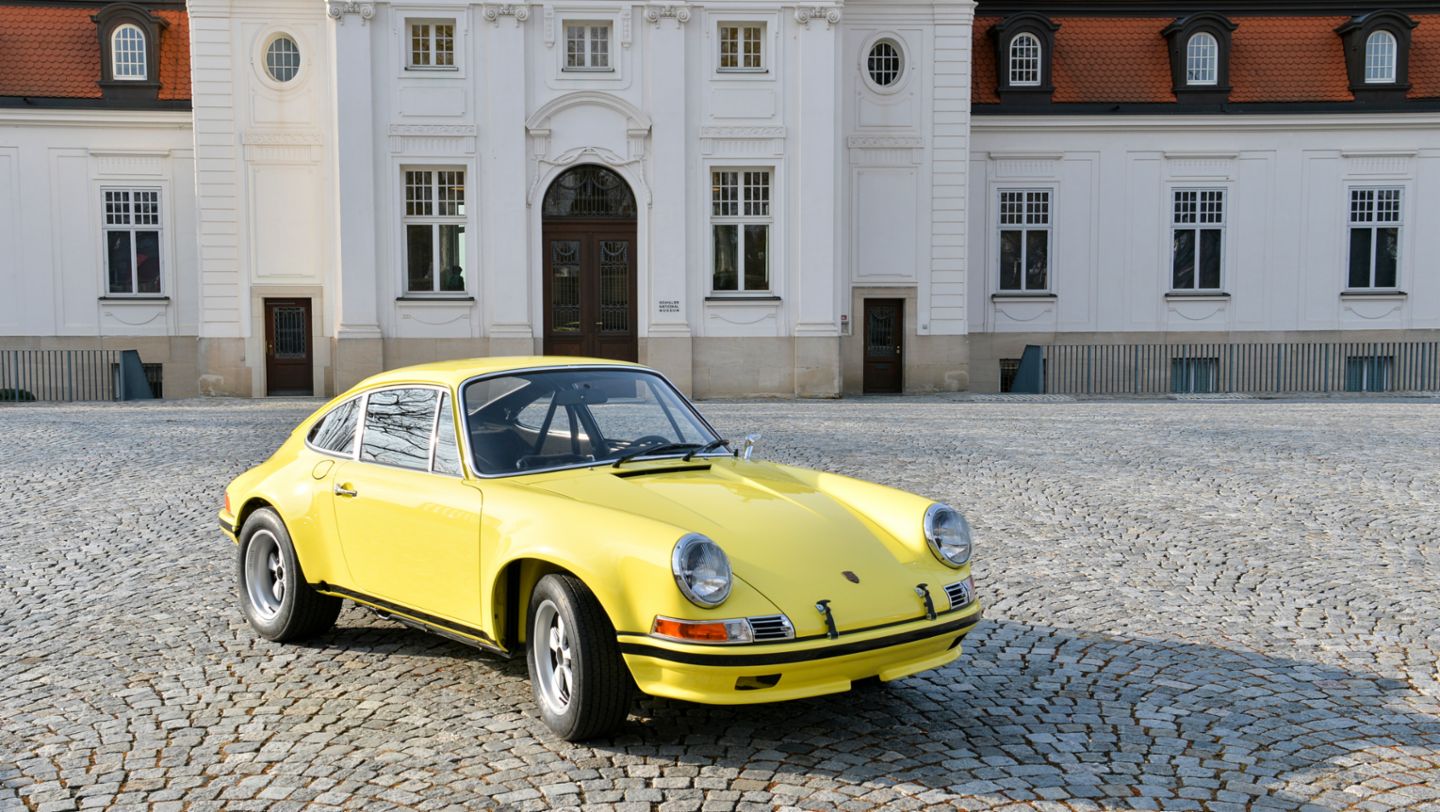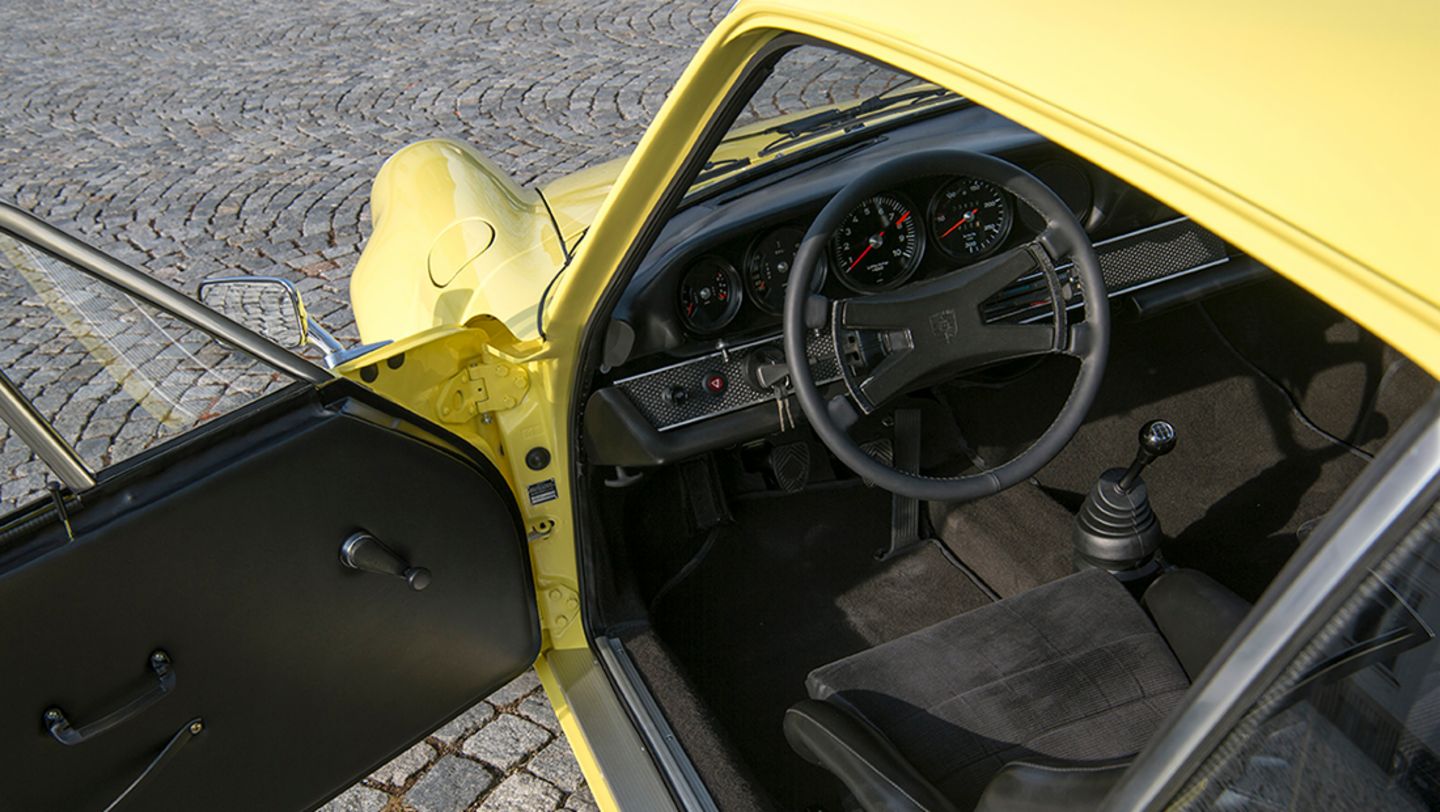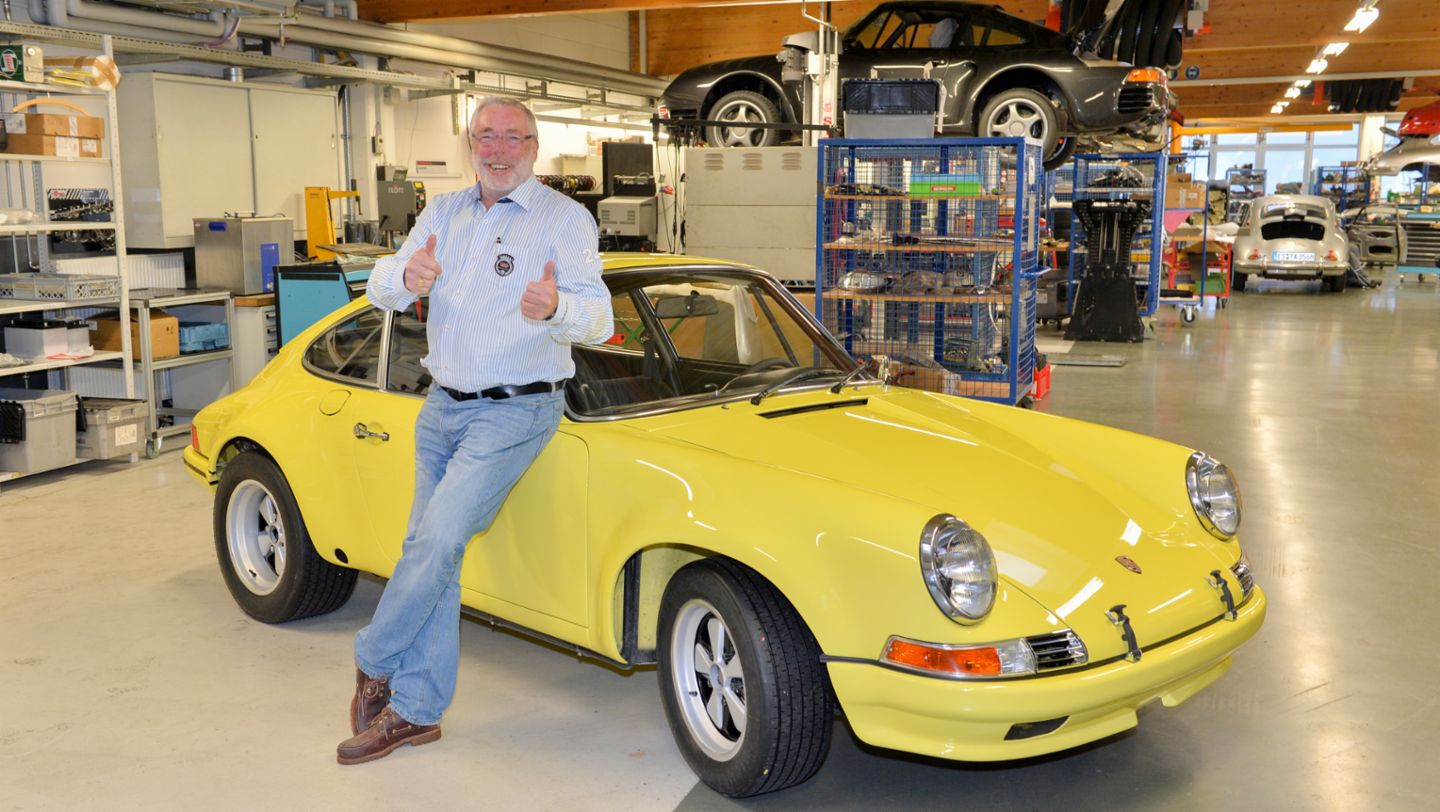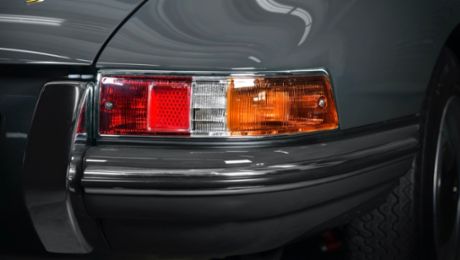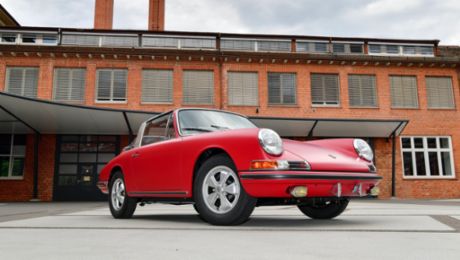How it all started
The 911 2.5 S/T was discovered on a playground in the USA a few years ago. The car, which raced at Le Mans or the Targa Florio in 1972, is in a critical condition: rusty, bent out of shape, wonky – and definitely not drivable. The rear cross member is missing, the roof dented. Time for the Porsche Classic experts to take over.
Bending it back into shape
On the straightening bench, the body-in-white is checked and restored to its original shape using a vehicle-specific set of alignment brackets. To do this, the specialists affix special metal plates to each of the axis points on the body, then pull them using a hydraulic dozer and a steel chain until the body is back in shape.
Paint removal
The paint is removed from every part of the body in an alkaline paint removal bath. Heavily corroded, thin sheets of metal are unable to withstand this type of treatment and are eliminated.
Body reconstruction
Next, the experts reconstruct the body step by step. This painstaking process is done purely by hand and takes over 1000 hours – and with the help of original Porsche body jigs. These sheet metal tools help the restorers work precisely and keep to the correct dimensions. For the 911 2.5 S/T many body parts needed to be custom fabricated on the basis of the original Porsche drawings dating from when the car was made.
Cathodic dip painting (CDP)
To ensure optimum corrosion protection for the body-in-white, it is treated in one of the most modern CDP lines in the world: at the Porsche plant in Zuffenhausen. This electrochemical process is even used to coat Porsche’s current new cars.
Paint
Now the body – including the underbody, engine compartment, the boot and the interior – are painted with primer. This is then followed by another royal discipline: factory painting by hand. Once this has been completed, the body is gleaming once again.
Assembly
After a curing period of about eight weeks, final assembly can commence. Because the 911 2.5 S/T is a particularly individual car for use in motor racing, a large number of detail solutions are called for. Everything has to be 100 % genuine and fully functional to break records on the race track!
The outcome
The 911 2.5 S/T is gleaming like new. The boot now contains a 110 litre plastic racing tank. The front and rear mudguards have been widened and bucket seats and a padded sports steering wheel some 380 mm in diameter provide the desired racing ergonomics. But take a look for yourself:
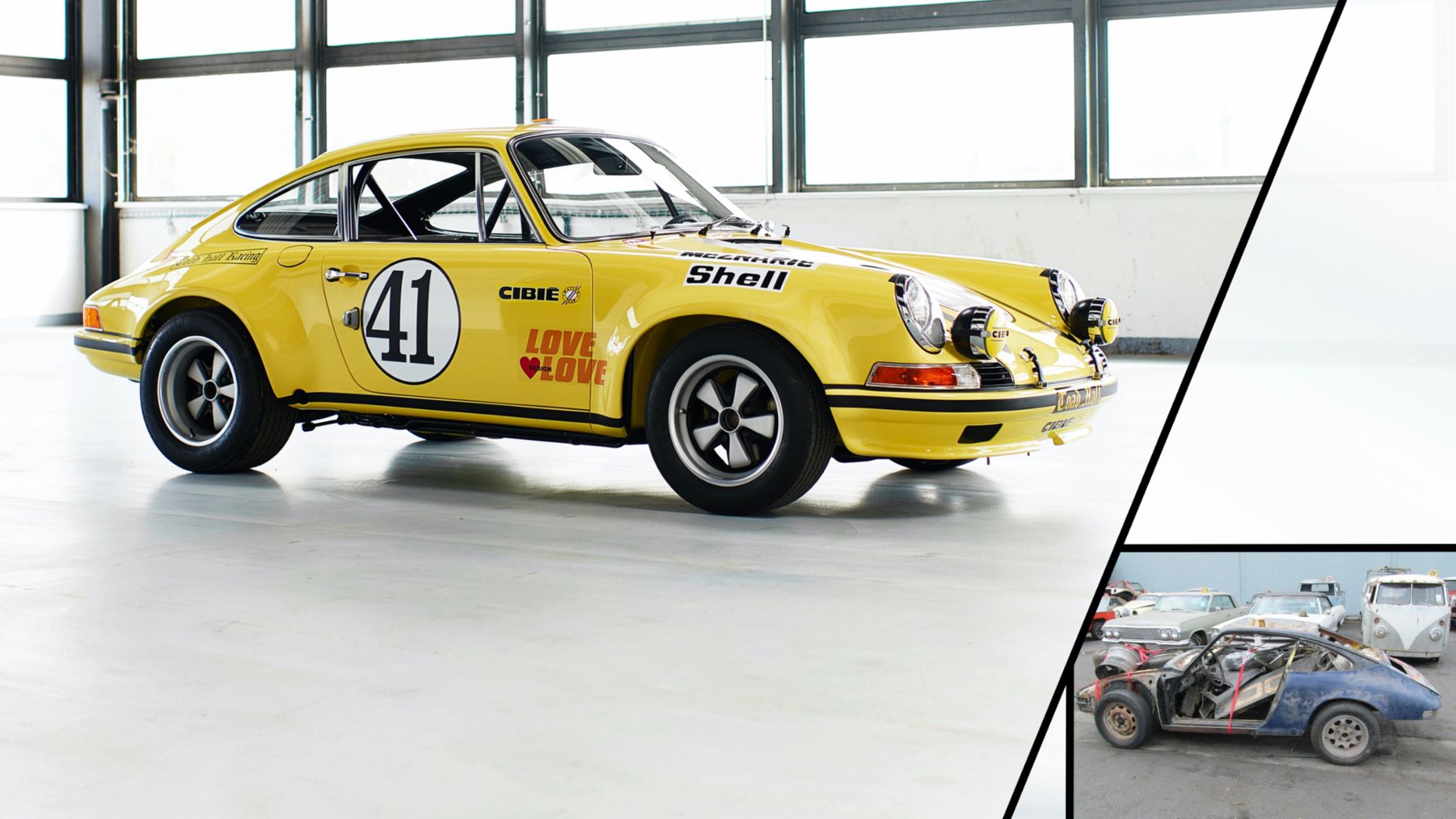
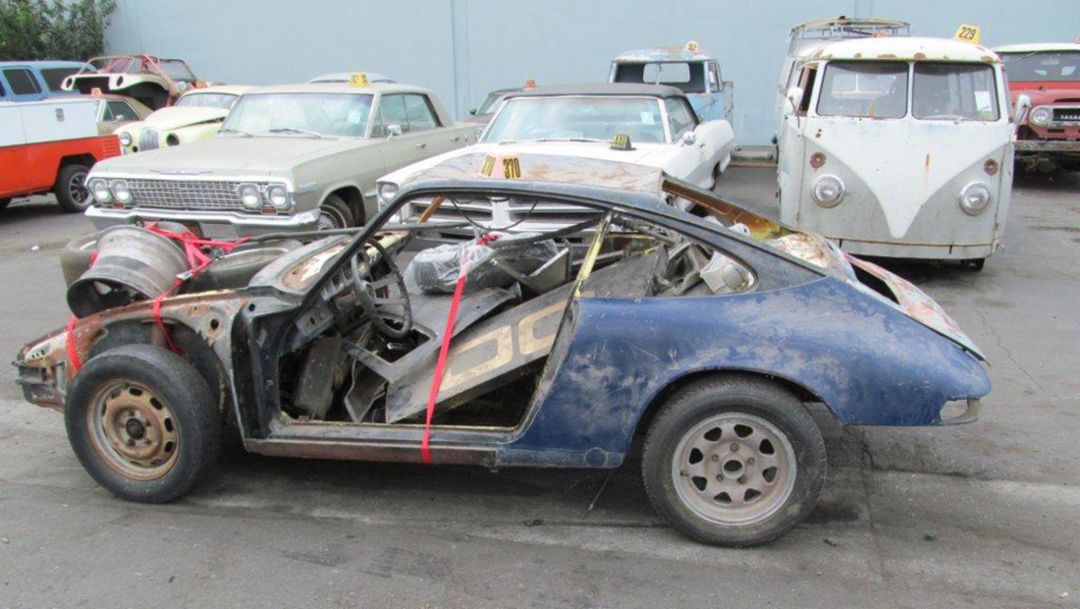
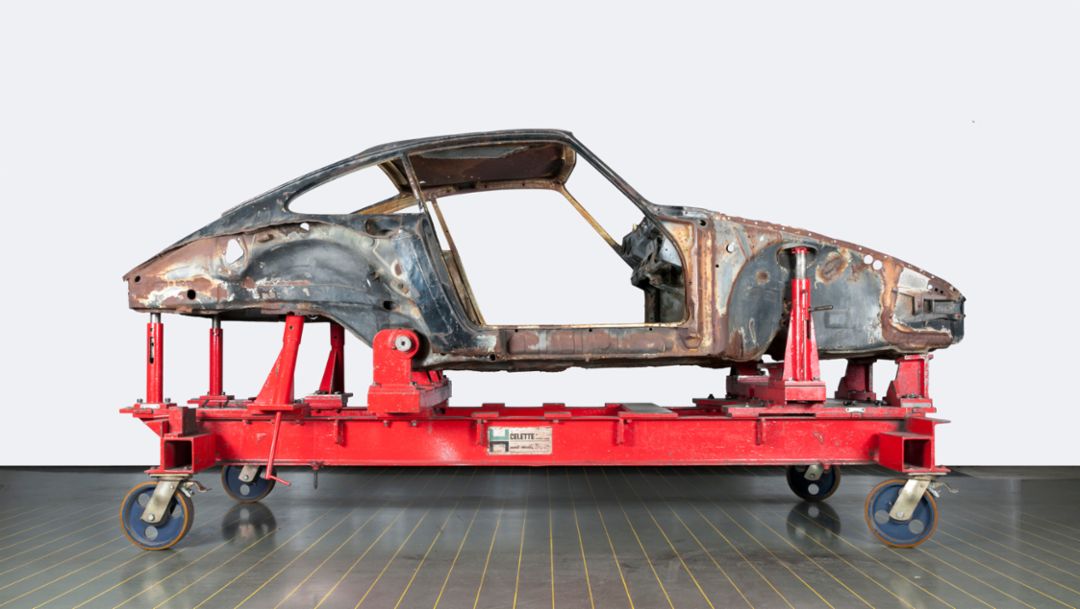
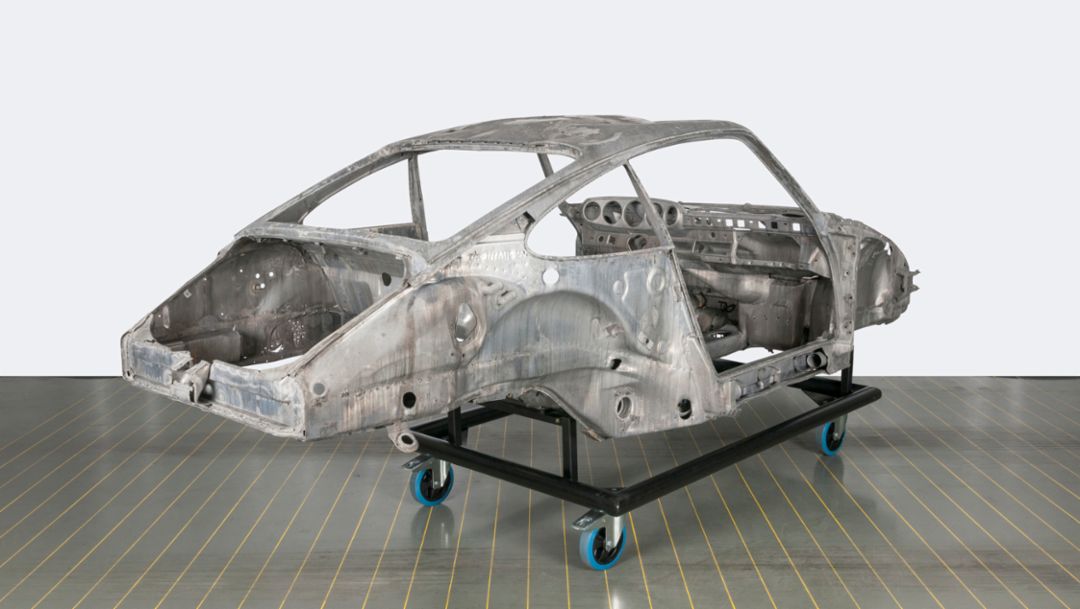
.jpg/jcr:content/7%20(16).jpg)
